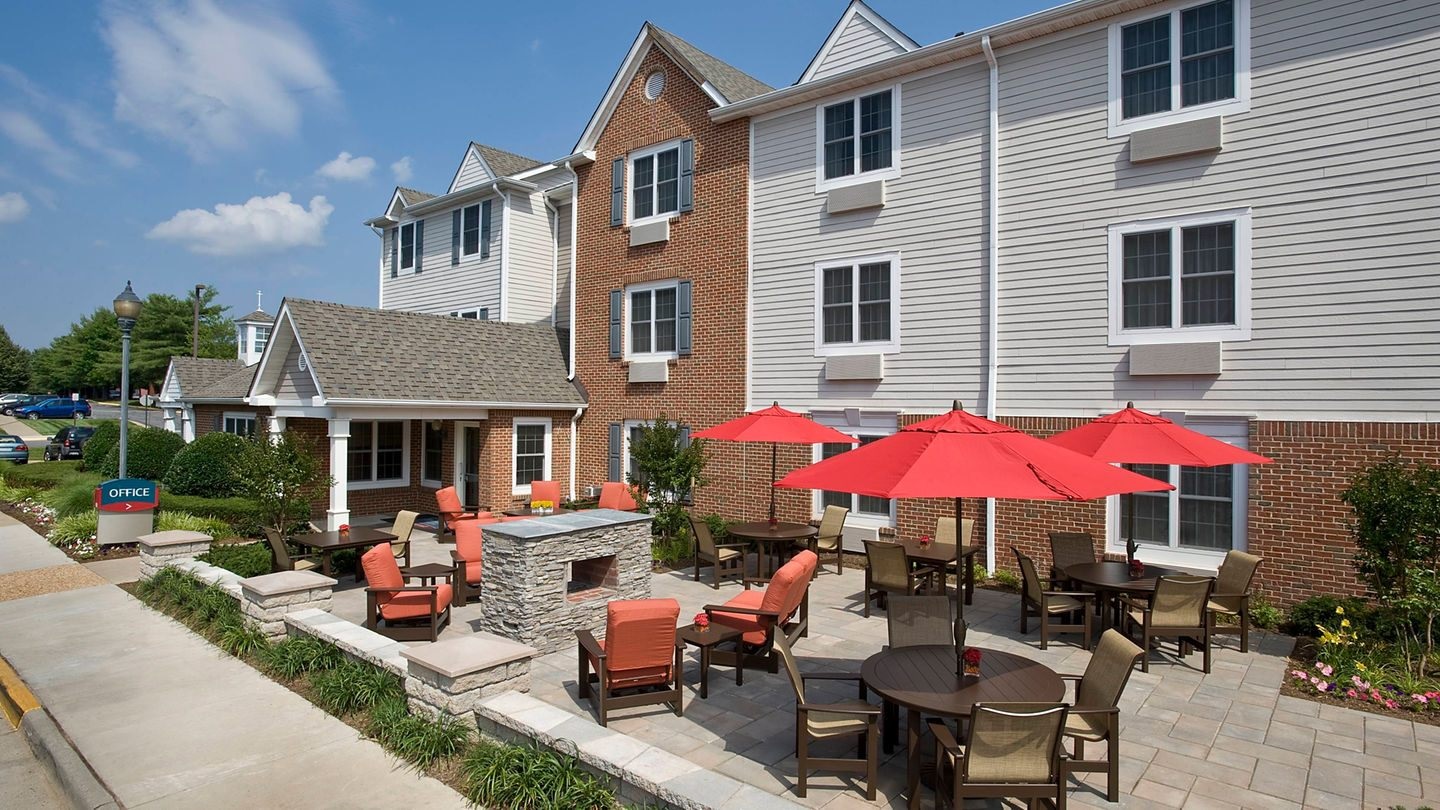When is a decrease not a decrease? When it’s an increase.
Being British has endowed me with a decent (some would say indecent) amount of cynicism. So when Marriott announced a huge devaluation in February 2018 that would take effect the following month, it made me wonder if they’d artificially inflated prices temporarily so they could lower them in August 2018 once the Marriott Rewards and Starwood Preferred Guest schemes had been combined.
As it turns out, that’s exactly what they’ve done; here’s how Marriott’s sleight of hand worked.

It’s a trick some stores use. They double the price of a product for a short amount of time, revert it back to its original price and say “Look! Half price!” We think we’re getting a great deal, but it’s simply the same deal we’d have received a week earlier before the price was raised.
Which brings us to Marriott.
The Claim
When Marriott announced which categories each property would fall into from August 2018, it was marketed as:
Nearly 70 percent of all participating hotels can be redeemed for the same or fewer points. (52 percent of hotels will move to a lower redemption rate and only 31 percent will go higher.)
According to Marriott, more than half their properties would cost fewer points from August, while less than a third of properties would increase in price. That all sounds very reasonable.
Except it’s not true.
Not when you take into account all the changes they made back in March anyway.
Back then, 1,082 properties – almost 20% of the Marriott Rewards portfolio at the time – moved up a category. From August, 67% of those properties will cost either the same or fewer points.
Why would Marriott raise the points required for stays at these hotels, only to lower many of them again just a few months later?
So they can claim an increase is a decrease. An alternative fact if you will.
When Less Is More
Let’s take the TownePlace Suites Dulles Airport as an example. Before March 2018, it was a category 2 property and therefore cost 10,000 points per night.

In March, it increased to a category 3 property which meant you now had to pay 15,000 points per night. However, from August it’ll be going back down to being a category 2 property. Except category 2 hotels will now cost 12,500 points.
So here’s where we are. The TownePlace Suites Dulles Airport cost 10,000 points per night in February and will cost 12,500 points from August. When phrased like that it seems obvious – it’ll cost 2,500 more points to stay at this hotel from August, so points redemptions there have been devalued.
Except Marriott consulted the retailer playbook. By artificially increasing the price to 15,000 points for five months and then decreasing it to 12,500 points, they can now claim you’ll require fewer points at this property.
That’s not the only example of this happening. In fact, there are hundreds of properties that will cost more, but which Marriott can claim cost less due to their category manipulation.
When Less Is The Same
There are other ways they’ve been able to manipulate the data. For this example we’ll use the Marriott Marquis Washington DC. Pre-March 2018, this hotel was a category 7 property and so required 35,000 points per night. In March it increased to category 8 and thus needed 40,000 points for a one night stay.

Fast forward to August and the Marriott Marquis Washington DC will be a category 5 property that costs 35,000 points per night. You’ll therefore have to use exactly the same number of points from August as you did a few months earlier, but Marriott can claim they’ve reduced how many points you need thanks to the temporary increase to 40,000 points.
Once again, there are hundreds of instances where they’ve done this.
When The Same Is More
Here’s a final example for a different scenario. Let’s say you want to stay at the San Jose Marriott. If you’d stayed there back in February, it’d have cost you 30,000 points per night.

The following month it went up a category and subsequently cost 35,000 points. This property will be classed as a category 5 property in August and so will continue costing 35,000 points.
The increased category in March means that Marriott can now claim that this property will cost the same number of points, when in reality it costs more compared to just a few months earlier.
The Stats
When taking the 1,082 properties where points redemptions increased back in March and comparing them to how many points you’ll require in August, this is what I found:
- 353 will require more points than they did pre-March, but Marriott can claim they cost less due to the increase in March.
- 213 will require the same number of points they did pre-March, but Marriott can claim they cost less due to the increase in March.
- 159 will require more points than they did pre-March, but Marriott can claim they cost the same due to the increase in March.
The Claim Versus The Reality
When announcing the August changes, Marriott claimed the following:
- 52% of properties will cost less
- 17% will cost the same
- 31% will cost more
Those percentages are based on comparing the current points requirements to those that’ll be in effect from August. As you might’ve guessed from the tone of this post, I think a more accurate comparison would be to the points required back in February.
When comparing that way, this is what you end up with:
- 43% of properties will cost less
- 18% will cost the same
- 39% will cost more
Comparing those percentages, you can see why Marriott did what they did. By temporarily inflating (or inflating a few months early) the number of points required at more than 700 properties, they can claim that more than half their properties will cost fewer points, when in reality far less than half are decreasing.
Similarly, they can claim more than two-thirds will cost less or stay the same, whereas it’s less than two-thirds. Meanwhile, they can also claim that less than a third of their properties will require more points, but in reality far more than a third are increasing.
Other Changes Implemented Early
The category changes in March weren’t the only changes they implemented early in order to avoid some backlash in August when Marriott Rewards and Starwood Preferred Guest finally became one.
Back in November, Greg wrote about how Marriott dumped rollover nights and status buy back. By implementing these changes at the start of 2018 rather than in August, they seem to be counting on people not associating the loss of these features with the merger of the two loyalty schemes and help ensure they get positive coverage in August.
Final Thoughts
Overall, the category changes Marriott’s implementing in August aren’t bad. Even when taking into account the artificial inflation of properties in March, we’re still seeing a larger number of properties requiring fewer points than costing more.
My issue has been with the seemingly disingenuous way that Marriott both implemented and presented these changes. 43% costing less and 39% costing more is a big difference to 52% costing less and 31% costing more – a 4% difference compared to a 21% difference. It’s also a good reminder that everything isn’t always as it seems when it comes to press releases.





[…] Marriott’s Sleight of Hand (How Marriott Raised Prices so They Could Claim to Lower Them […]
[…] or staying the same when redeeming points for free stays.” Although, as Stephen from the Frequent Miler points out, while technically true, in practice it’s not quite that great given the devaluation that […]
[…] and my stash has dwindled. With the 3->2 devaluation Marriott not only killed my earning, but they also devalued the hotel I *most likely* would use my points at. This come on the heels of a March 2018 increase of that same hotel. All told I’m seeing a […]
[…] here’s Frequent Miler with a stat-filled article that points out that, while many hotels went down in category, a lot of them just went up in March! […]
[…] анализу моего коллеги frequentmiler, вот как выглядит подтасовка. Среди тех отелей, […]
I really liked how you called out this falsehood in the post.
[…] percentages are accurate compared to what prices are on Marriott’s award chart today, as Frequent Miler pointed out, they don’t take into account the comparatively large devaluation Marriott […]
Good analysis! As Stephen points out this a cynical game played by many retailers. I see this all of the time at Safeway. It is so obvious that when I want to buy a certain brand of ice cream I just wait a week when it will be “on sale” for half the “regular” (read inflated) price.
Today—My 30k spend on my Canadian amex this summer got me a cat.6 Marriott property x 3 nights
August—My 30k spend on my ” ” ” ” next summer high season gets me a cat. 4 Marriott property x 2 nights
In other words instead of increasing the cat 4 next year from 30k MR points it’s really equal to 45k MR points..the difference is it’s lost in CC earn rate instead of points.Now the value of the MR points stays close to 0.09cents but in reality it’s around 0.06cents.But we won’t see those stats because they just reduced the earn rate by 33% instead.
Is it just me or people are getting duped by the amount of points as a deflection and not the CC spend massive devaluation of 33%?
Even the Platinum elites at 75% more points end up with 42% with the 33% loss on CC spend
Stephen,
If you include the 4-5% of hotels that saw point decreases vs increases in the March change, how do the numbers look. It looks like you’re suggesting that the March increases created about a 10% delta between what was advertised in the program combination and what the reality is pre-March devaluation. If the 4-5% maintained their March decrease in the merger, it seems like the difference is likely negligible.
[…] Marriott’s Sleight Of Hand: Category Changes Worse Than Advertised by Frequent Miler. Great article, as bloggers it’s important to call out chains when they try to pull this type of thing rather than just constantly praising them. […]
[…] Marriott’s Sleight Of Hand: Category Changes Worse Than Advertised by Frequent Miler. Great article, as bloggers it’s important to call out chains when they try to pull this type of thing rather than just constantly praising them. […]
[…] There does not appear to have been grotesque award chart inflation (though it’s not as rosy as Marriott makes it sound). […]
The grotesque part is not on the points chart it’s in the earn rates on the CC and the high season redemption.
High season mostly puts the same properties back at the same level instead of going down …now add 33% devaluation in the points needed by the points you now don’t earn on your CC spend?
So my cat 3 high season hotel cost me the same as a level 4 but the 20k points needed costs me 3300$ more in spend…10k instead of 6700$.
Now take that 33% back at 3x as of today and i could get a 30,000 point property with the same spend on my CC.
So next summer i’ll have a cat 3 was a cat4 high season for the same money it now costs for what was a cat.6. today because of those 2 factors.
That is exactly my point. See above. I dont understand how people are blind to this 33% devaluation.
Completely agree…Canada is high season vacation time and 33% devalueation on CC spend.
Today with todays MR chart a 10k spend on my CC would get me a cat 6 but the 33% less would only give me a cat.4.
Some see this as a normal adjustment while it’s a massive increase both by playing with the points chart,high season rates and the 33% earn rate reduction.
Of course they will be able to stay close to the 9c/point value but the customer needs to pay 33cents/dollar more to get the exact same amount of points.
It’s the same trick as a CC company that states you can save the foreign transaction fee for a Canadian of 2.5% by applying for a US currency credit card and a US account…then you ask them but I need to pay in USD so how much do you charge to transfer from my CAD account to the USD account…well sir it’s 2.5% in currency conversion fees…OK then I’m at net (0)lol but it costs me 14.95$ month in service fees for my USD account? Yep..this is the same.
Nice article..Now can you imagine the high season rates that are new which nullifies most of the reduction they temporary have but will go in effect next summer? Most people have vacation in high season times so I would like for people to compare with only high season which is really the normal prices for most vacation travelers.
Excellent post! New content and great analysis without writing a novel! This is something I couldn’t never figure out myself but with your concise analysis I will keep my enthusiasm in check. Keep up the great work 🙂 longer doesn’t always mean better!